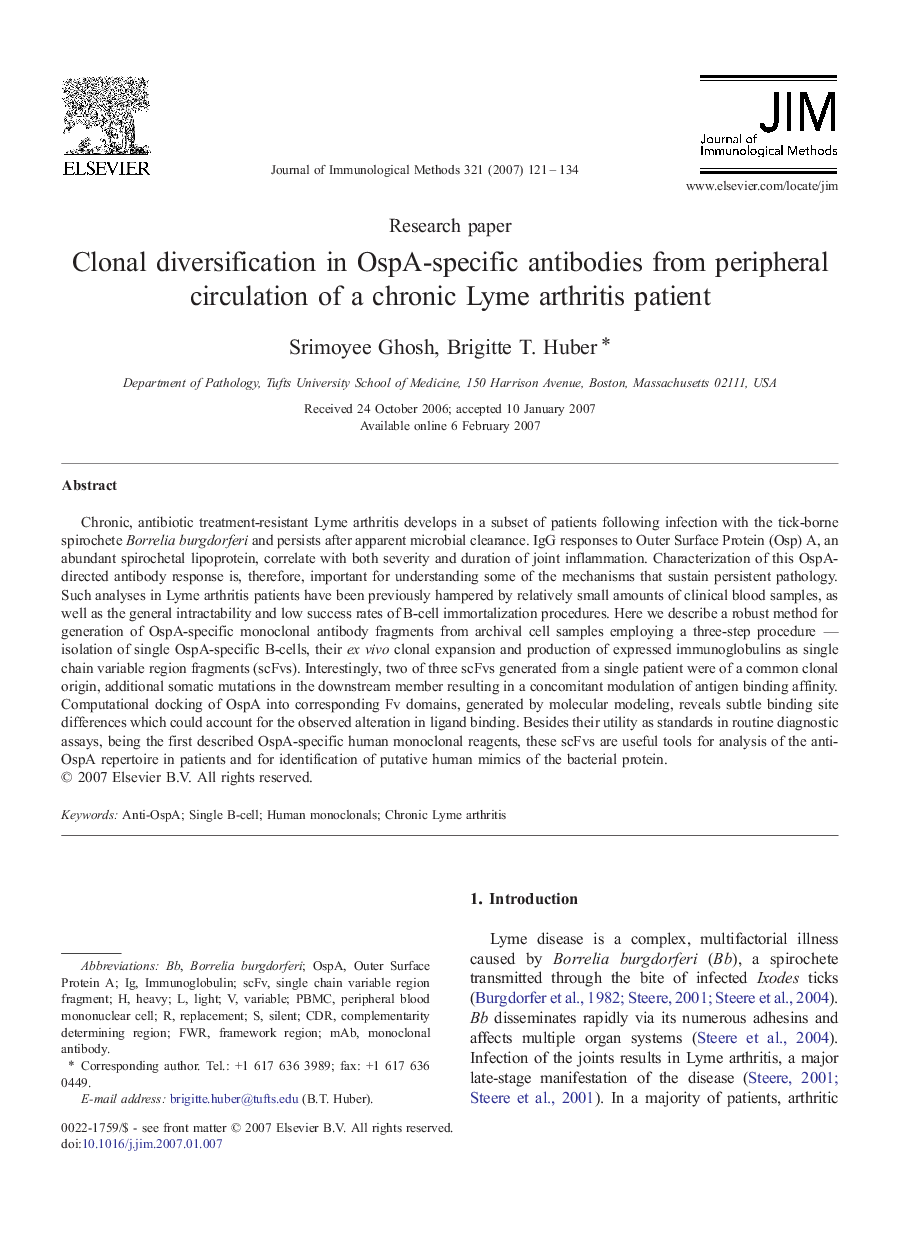| Article ID | Journal | Published Year | Pages | File Type |
|---|---|---|---|---|
| 2089456 | Journal of Immunological Methods | 2007 | 14 Pages |
Abstract
Chronic, antibiotic treatment-resistant Lyme arthritis develops in a subset of patients following infection with the tick-borne spirochete Borrelia burgdorferi and persists after apparent microbial clearance. IgG responses to Outer Surface Protein (Osp) A, an abundant spirochetal lipoprotein, correlate with both severity and duration of joint inflammation. Characterization of this OspA-directed antibody response is, therefore, important for understanding some of the mechanisms that sustain persistent pathology. Such analyses in Lyme arthritis patients have been previously hampered by relatively small amounts of clinical blood samples, as well as the general intractability and low success rates of B-cell immortalization procedures. Here we describe a robust method for generation of OspA-specific monoclonal antibody fragments from archival cell samples employing a three-step procedure - isolation of single OspA-specific B-cells, their ex vivo clonal expansion and production of expressed immunoglobulins as single chain variable region fragments (scFvs). Interestingly, two of three scFvs generated from a single patient were of a common clonal origin, additional somatic mutations in the downstream member resulting in a concomitant modulation of antigen binding affinity. Computational docking of OspA into corresponding Fv domains, generated by molecular modeling, reveals subtle binding site differences which could account for the observed alteration in ligand binding. Besides their utility as standards in routine diagnostic assays, being the first described OspA-specific human monoclonal reagents, these scFvs are useful tools for analysis of the anti-OspA repertoire in patients and for identification of putative human mimics of the bacterial protein.
Keywords
Related Topics
Life Sciences
Biochemistry, Genetics and Molecular Biology
Biotechnology
Authors
Srimoyee Ghosh, Brigitte T. Huber,
